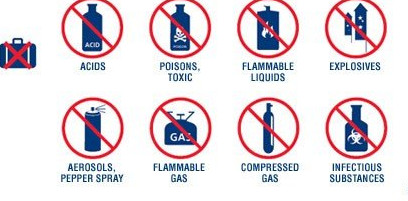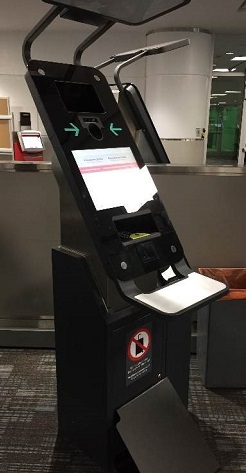Before Arriving in Canada
Before you embark on your journey to Canada, it is important to ensure that you have all the necessary documents, essential items, and knowledge of some of the common airport/immigration processes, and the Canadian customs regulations. Proper preparation will help make your arrival and transition smoother. In this chapter, we will guide you through the key aspects of preparing for your arrival in Canada.
Essential Documents to Carry

- Passport: Your valid passport is the most crucial document you must carry. Ensure that your passport is valid for the entire duration of your stay in Canada. It is also recommended to make copies, including digital copies, of your passport and keep them in separate places as a backup.
- Study Permit: Your study permit is a vital document that allows you to study in Canada. Make sure you have your original study permit and any related documents such as the acceptance letter from your Canadian educational institution.
- Offer Letter: Carry a printed copy of your offer letter or admission confirmation from the Canadian college or university you will be attending. This document may be required during immigration procedures.
- Financial Documents: It is essential to carry proof of funds to demonstrate that you can support yourself financially while studying in Canada. This can include bank statements, scholarship letters, or loan documents.
- Health Insurance: Ensure that you have health insurance coverage for your stay in Canada. Carry the necessary documentation, such as your insurance policy or coverage details.
- Academic Documents: Carry your educational transcripts, diplomas, and any other relevant academic documents that you may need for reference or enrollment purposes.
- Contact Information: Have a list of important contact numbers, including emergency contacts, the Canadian embassy or consulate in your home country, and the contact information of your designated learning institution in Canada.
What to Bring/Not to Bring
When entering Canada, you will go through customs and immigration procedures. It is important to understand Canadian customs regulations to avoid any complications. Here are a few key points:

- Prohibited and Restricted Items: Certain items, such as firearms, narcotics, certain foods, and endangered species products, are prohibited or restricted in Canada.
- Declaration Forms: You will need to fill out a customs declaration form upon arrival in Canada. Be truthful and accurate while declaring your belongings, including such items as laptop for personal use, and the amount of money you are carrying. Failing to declare items can lead to penalties or confiscation.
- Duty-Free Allowances: Familiarize yourself with the duty-free allowances for various items. You may be able to bring certain goods into Canada without paying customs duties or taxes up to specified limits. Ensure that you stay within the allowed limits to avoid any additional charges.
- Traveling with Cash: If you are carrying a large sum of money (CAD $10,000 or more), you must declare it upon arrival in Canada. Failure to declare the amount can lead to seizure of the funds and potential legal consequences. It is always advisable to carry a reasonable amount of money and use other forms of payment like credit cards or traveler’s checks.
- Agricultural and Food Products: Canada has strict regulations regarding the importation of agricultural and food products. Certain fruits, vegetables, meat, dairy, and other animal products may be subject to restrictions. It is recommended to check the Canadian Food Inspection Agency (CFIA) website or contact the CFIA directly to determine what items are allowed and any required documentation.
When to Arrive
There is no hard and fast rule when to arrive in Canada. However, it is advised not to arrive too early or too late. Give yourself enough time to settle down with your new accommodation, travel arrangements to and your school etc.
Transit Airports Formalities
You might be arriving in Canada from your country of residence directly or through other airports in transit. It is highly possible that at every airport your documents will be checked and sometimes you may face immigration officers questioning you about your purpose of visit etc.
In Canada

You will first arrive at a Port of Entry (PoE), which is an official entry point – an airport, a port or a land crossing – to Canada. The PoE and your final destination airport don’t have to be the same. For example, if you are going to Calgary but if your flight first lands in Toronto and then you have to take another flight to Calgary, Toronto will be your PoE.
At a PoE, a Canada Border Services Agency (CBSA) officer will check for your documents, including your fingerprints, and their authenticity. Likely, you will also receive a stamp in your passport.

Immigration Procedures: Passport and Documentation: You are required to present a valid passport, along with any applicable travel documents, such as a Study Permit or visa, to the officer.
Purpose of Visit: The officer will ask questions about the purpose of your visit, duration of stay, and other relevant details. Providing accurate and truthful information is important.
Study Permit Verification: If you hold a Study Permit, the officer may verify its validity and authenticity, ensuring compliance with Canadian immigration regulations. The officer would want to ensure that you are the person your documents say you are, that you are here only to study and that you have sufficient financial resources.
Customs Procedures: Declaration of Goods: As a visitor or temporary resident to Canada, you can bring personal items with you for your own use such as: personal clothing and toiletries, books, personal computers and other personal electronic items. When you are entering Canada by plane, you will be asked to complete a CBSA Declaration Card to state what you are bringing into Canada. You must declare any goods they are bringing into Canada, including personal belongings such as laptops, gifts, or items for commercial purposes. Familiarize yourself with the customs regulations regarding restricted or prohibited items. You will also have to declare if you bring in more than CAD10,000 in cash.
Baggage Inspection: Customs officers may inspect your checked and carry-on baggage to ensure compliance with import regulations and to detect any prohibited items.
Collection and Recheck of Luggage: After clearing immigration and customs, you must collect their checked baggage from the designated area. Ensure to keep track of any baggage claim tags or receipts provided during the check-in process.
Baggage & Secondary Inspection: Usually, after collecting your luggage you will pass through the customs/CBSA station where you will present your CBSA declaration card (which the immigration officer or the kiosk will give you).
Here you will be issued with your Study Permit, some times after an interview. You may also asked to go to another area for secondary inspection and interview.
Once you have cleared, you are free to leave. If your final destination is a different airport and have a connecting flight, follow the signs to drop off your luggage and board the aircraft.
If your final destination is a different city, follow the signs to get to the mode of transportation – bus, train, taxi or pickup.
Ensure that you have organized your trip to your accommodation from the airport.
